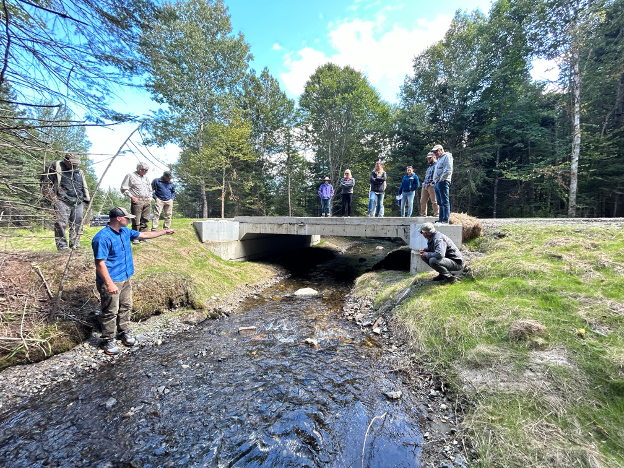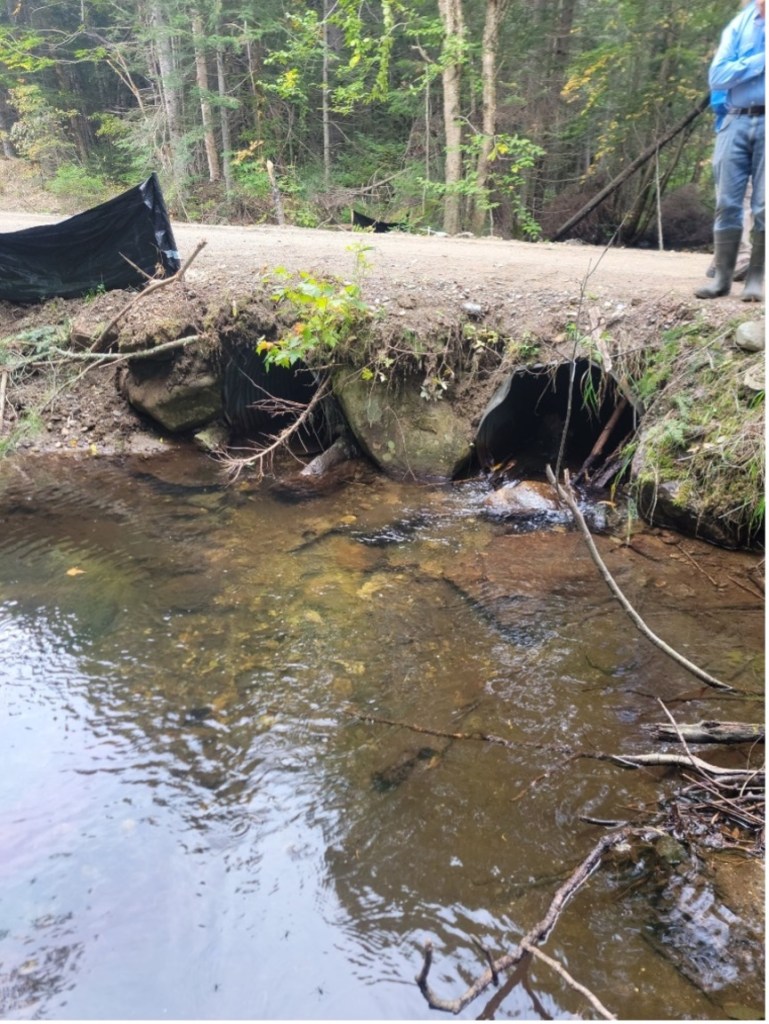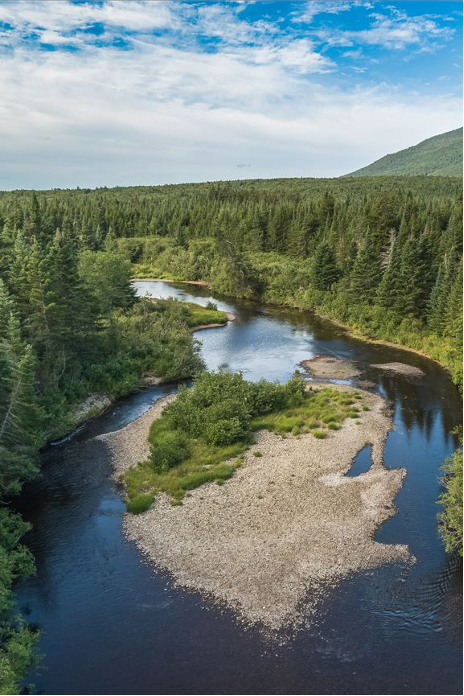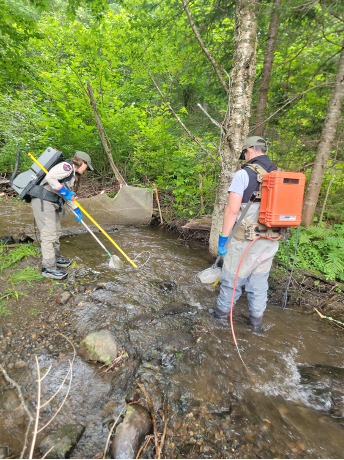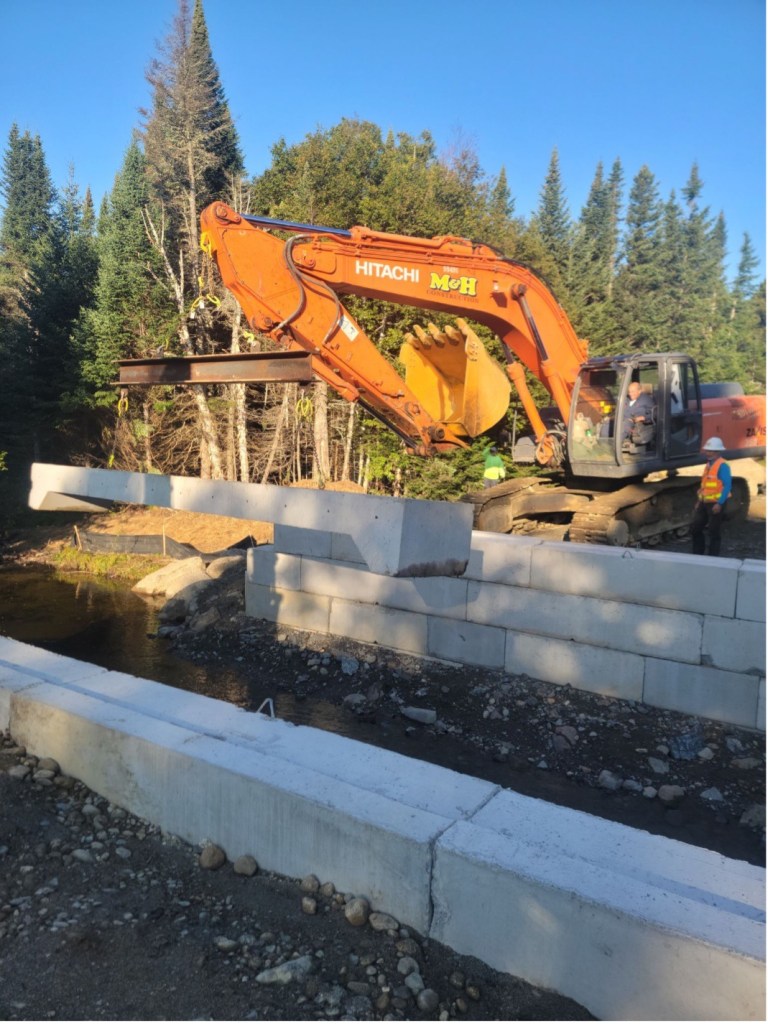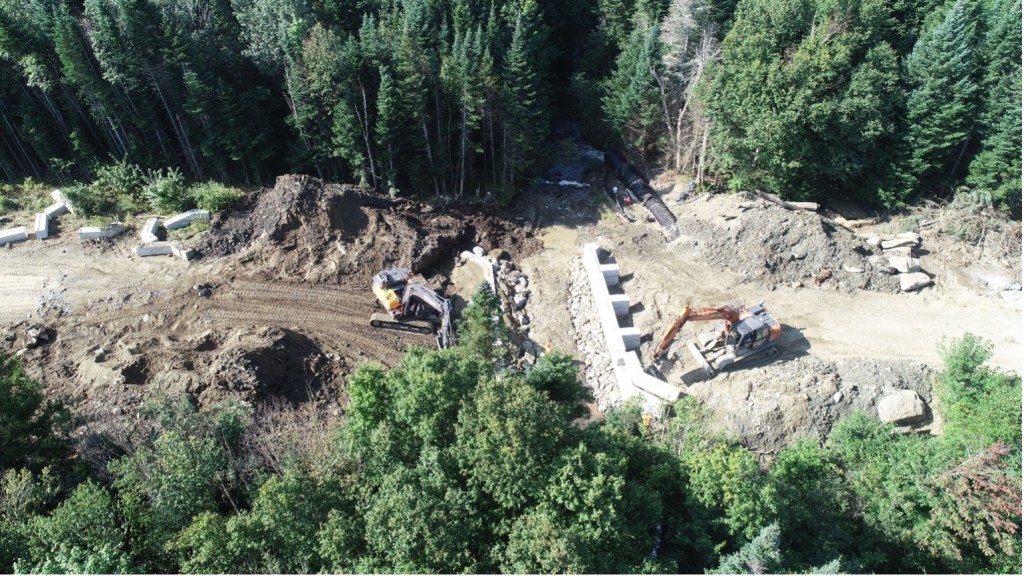
Rangeley Lakes Heritage Trust staff and members inspect the completed bridge at Sol Brook. Submitted photo
The Rangeley Lakes Heritage Trust, in partnership with the U.S. Fish and Wildlife Service, Maine Department of Inland Fisheries and Wildlife and Trout Unlimited, has partially completed an effort to restore habitat for native Eastern brook trout and other aquatic species in the Kennebago watershed in Adamstown.

Undersized culverts on Sol Brook prior to bridge construction. Submitted photo
The Kennebago watershed supports a resilient, intact population of self-sustaining wild brook trout, one of the last in the United States. It’s a complex watershed comprised of miles of cold headwater tributaries, rivers and deep-water lakes. The network of dirt roads across the Kennebago watershed provides a vital route to transport sustainable forest products and access for camp owners and outdoor enthusiasts, according to a news release from Amanda Laliberte, trust programs and communications.

The Mainstem of the Kennebago River looking North. Submitted photo
One of the barriers to a healthy river ecosystem is habitat fragmentation, typically in the form of culverts or dams. A priority for this restoration project is to reconnect miles of critical upstream habitat through the replacement culverts, many of which are undersized, perched, or in otherwise poor condition.
The Kennebago watershed is extremely flashy, meaning there are large fluctuations in water flow in response to weather events. Heavy rainfall and steep gradients in the surrounding landscape leave culverts vulnerable to washouts. Proactive replacement of these culverts also mitigates future degradation of the aquatic habitat.
Trust staff, with the assistance of the USFWS and The Nature Conservancy, identified 12 culverts as barriers to aquatic organism passage.

Liz Latti, left, MDIFW Regional Fisheries Biologist and MDIFW Fisheries Biologist Dylan Whitaker electrofishing on Sol Brook to remove fish from the worksite. Submitted photo
Open-bottomed bridges, replacing the culverts, are engineered to withstand 100-year flood events and last for a century. The improved crossings will contribute to the health and resiliency of brook trout populations. Trout can move unrestricted throughout the watershed to access spawning, rearing, and thermal refuge habitat.
In August, the culvert replaced at Sol Brook reconnected 2.4 miles of upstream habitat. Then, an undersized culvert was replaced at Otter Brook, reconnecting 4.73 miles of upstream habitat. Restored was a total length of 7.13 miles of river.

Joe Haley of M & H Construction, left, and Alex Abbot, river restoration specialist, right, prepare to set a 20,000-pound deck panel at Otter Brook. Submitted photo
Although the region experienced above-average precipitation this summer, August is typically the driest period in Maine and does not coincide with brook trout spawning, which usually occurs in October.
M & H Construction completed the construction of the bridges with an operator from Umbagog National Wildlife Refuge. Each bridge took five to seven days to complete.
Additional culvert replacements within the Kennebago watershed will occur in 2024.

Bridge Construction under way on Otter Brook on Aug. 23. M & H Construction is at right, and USFWS Umbagog NWR at left. Submitted photo
Check out other upcoming area events!
Copy the Story LinkComments are not available on this story.
Send questions/comments to the editors.

